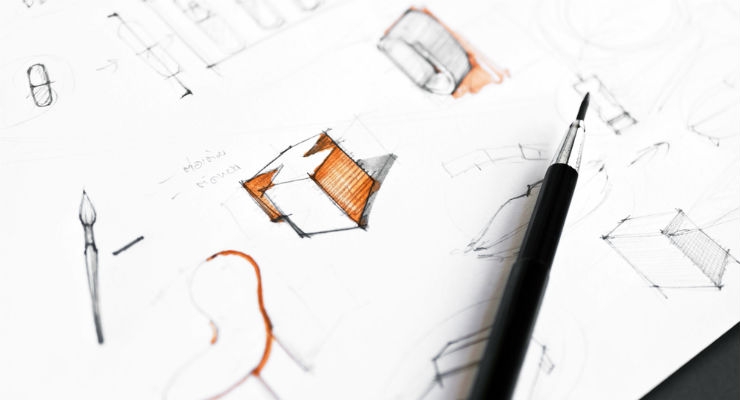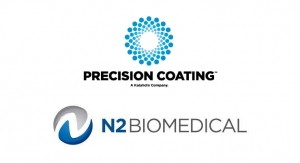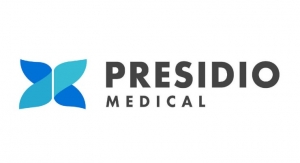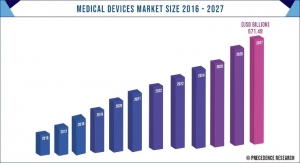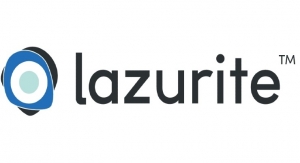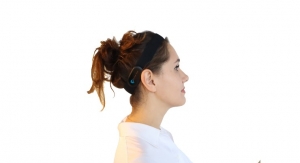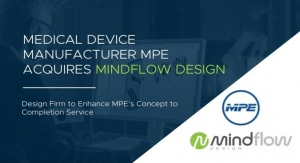Sean Fenske, Editor01.19.16
In the consumer space, a device that triggers an emotional response among users through its design is a trait of many successful technologies. The user develops a type of bond with the device as it fulfills an emotional need of sorts. This could be considered the greatest success in the design of a device as it ensures the user will remain loyal and is much less likely to seek out a competitive offering.
A great example of this type of emotional bond between a device and user can be seen among consumers of Apple products. While similar—or in some cases, even superior—offerings may be available, Apple has achieved an emotional bond with their customer base and it would take a significant disappointment to diminish that connection.
Conversely, in the medical device space, design can often be viewed as driven by functional requirements first. This approach can result in a device that doesn’t generate that same type of response or address an emotional need for a patient managing their health. The technology provides the necessary clinical solution, but that “attachment” to it does not exist beyond the user knowing they need it for a health purpose.
With more medical technology moving into the hands of the patients themselves, thinking about the emotional response a device might create has never been more important. Whether a drug delivery device, glucose monitor, rehabilitation product, or another technology that’s used directly by patients (often outside of a doctor’s office or hospital), establishing a connection with the user can be almost as important to a product’s success as its clinical efficacy. Developing a device that generates this type of emotional response, however, is not a concept with which many medical device makers are familiar. Further, they have no idea as to how to address this during early project development.
With this in mind, MPO reached out design and development firms that have experience in the medtech industry. They were asked about this topic and posed the following question, “How do you design emotion into a medical device?”

Sean Hägen
Sean Hägen, Principal, Director of Research & Synthesis, BlackHägen Design, and IDSA Board Member
In the medical device design and development world, clinical efficacy has understandably been priority one. This typically translates as a technology-driven design. The next priority is usability, which balances ease-of-use with use safety. So aesthetics, the realm of industrial design, has often been a low priority and even marginalized. However, as efficacy becomes the price of entry for competing in a market, commercial drivers focus more on usability and aesthetics. This is especially effective when industrial design is utilized early on for its user-experience capabilities.
It is not only important that the user feels an emotional connection with the product to be commercially competitive, but this connection can enhance usability and efficacy too. This is particularly evident when the user is the patient, a scenario that is becoming more common. For example, it is well understood that a patient will be more inclined to carry and use a device in public if the product does not draw attention to the user’s illness. In other words, the appropriate aesthetic is that of a consumer product, not a clinical device.
The “appropriate” aesthetic is not universal across all medical segments. Where a homecare device may be appropriately whimsical in style, a life-support device in the ICU should have different aesthetic characteristics like serious, high tech, and clean. This appropriate aesthetic delights the clinical user such that they feel their needs have been addressed elegantly while not intimidating the patient.

Dan O'Sullivan
Dan O'Sullivan, Senior Director of Design, Farm
The best designers always strive to create a product experience so engaging that it establishes an emotional connection between the product and the person using it. In the case of medical device design, creating this kind of relationship between user and product is a more complex proposition, because while millions of consumers lust after the next iPhone, nobody wants to wear an insulin pump. An emotional bond is formed when the user feels that the product is there to help them, as if it were a close companion cheering them on to better health.
To create that emotional connection, designers tailor their concepts based on a deep understanding of how the user will interact with the product. For example, when we redesigned the Aircast AirSelect Walking Boot for DJO, we knew that patients would benefit from a cast that was lighter and easier to adjust. But by analyzing the mechanics of how people walk when wearing the product, we were also able to design a new sole shape that made the experience of walking with a cast much more natural and enjoyable. We can design medical products to be so engaging and intuitive to use that they improve the patient’s life and eliminate the hurdles to compliance.

Dan Stipe
Dan Stipe, Senior Director of Industrial Design, Forma Medical Device Design
It's true that many medical products are now being used in homes and in public settings, both by untrained caregivers and by patients themselves. Oxygen concentrators would be one example. Products intended for use in those environments require the designer to consider needs different from those of users in a hospital or clinic.
Apart from its functionality, a product's appeal comes in large part by the way it makes us feel about ourselves—a component of which is the emotions it elicits within us. We buy products that reinforce the image of who we want to be. In that respect, every product should be designed to provide emotional appeal to whomever the intended user is. The key is knowing exactly what it is that appeals to your users, be they the cardiac surgeon or your ailing grandma. Then it's a matter of knowing how to combine various elements of design to elicit the intended emotional response. That’s not an easy task. Don't try this at home; it's a job for a professional!

Lisa Schmalhurst
Lisa Schmalhurst, Project Manager, Stratos Product Development
Designing emotion into medical devices is really about fulfilling the user’s medical need in a way that aligns with their personal motivations. It doesn’t have to be a mystical thing to develop a compelling, user-facing medical device.
There’s a great example of both sides of this argument in wearables. There are wearables for just about everything these days. Yet, a good number of them are used for two weeks to two months and then relegated to a drawer. Why? It’s not because it’s not a great piece of tech or that it’s an ugly design. Humans stop using those things that they do not feel are giving them value. Do I really need to know how many steps I walked today? Can’t I just tell by the fact that my pants haven’t loosened on me? However, some wearables are staples of a person’s daily use.
The key to creating a compelling need when defining your medical device design starts early in the development process by investigating the user’s life around the device. Simply observing users during their day—particularly if you can watch how they use (or don’t use!) their current solution—is fundamental to understanding the device’s ecosystem. There are times when I’ve found it more useful to ask users about their “deviances” from the use instructions. At those points you find what not to do with your design. Later in time, as your device prototypes reach sufficient levels of maturity, getting back into the user’s own environment with the prototypes is a great way to understand how you are doing relative to the target. If possible, it is extremely useful to allow your “guinea pigs” to use the prototypes on their own, in their own environment, before you try to talk with them or observe them directly; you’ll get truer answers and uncover issues that are simply not possible to get at in short-term tests.
The key is to stop asking “what” your device will do—that’s the easy part. Start asking “why.”
Interested in having your thoughts on this topic presented from the Sounding Board? Send your 150-250 word reply to sfenske@rodmanmedia.com.
A great example of this type of emotional bond between a device and user can be seen among consumers of Apple products. While similar—or in some cases, even superior—offerings may be available, Apple has achieved an emotional bond with their customer base and it would take a significant disappointment to diminish that connection.
Conversely, in the medical device space, design can often be viewed as driven by functional requirements first. This approach can result in a device that doesn’t generate that same type of response or address an emotional need for a patient managing their health. The technology provides the necessary clinical solution, but that “attachment” to it does not exist beyond the user knowing they need it for a health purpose.
With more medical technology moving into the hands of the patients themselves, thinking about the emotional response a device might create has never been more important. Whether a drug delivery device, glucose monitor, rehabilitation product, or another technology that’s used directly by patients (often outside of a doctor’s office or hospital), establishing a connection with the user can be almost as important to a product’s success as its clinical efficacy. Developing a device that generates this type of emotional response, however, is not a concept with which many medical device makers are familiar. Further, they have no idea as to how to address this during early project development.
With this in mind, MPO reached out design and development firms that have experience in the medtech industry. They were asked about this topic and posed the following question, “How do you design emotion into a medical device?”

Sean Hägen
In the medical device design and development world, clinical efficacy has understandably been priority one. This typically translates as a technology-driven design. The next priority is usability, which balances ease-of-use with use safety. So aesthetics, the realm of industrial design, has often been a low priority and even marginalized. However, as efficacy becomes the price of entry for competing in a market, commercial drivers focus more on usability and aesthetics. This is especially effective when industrial design is utilized early on for its user-experience capabilities.
It is not only important that the user feels an emotional connection with the product to be commercially competitive, but this connection can enhance usability and efficacy too. This is particularly evident when the user is the patient, a scenario that is becoming more common. For example, it is well understood that a patient will be more inclined to carry and use a device in public if the product does not draw attention to the user’s illness. In other words, the appropriate aesthetic is that of a consumer product, not a clinical device.
The “appropriate” aesthetic is not universal across all medical segments. Where a homecare device may be appropriately whimsical in style, a life-support device in the ICU should have different aesthetic characteristics like serious, high tech, and clean. This appropriate aesthetic delights the clinical user such that they feel their needs have been addressed elegantly while not intimidating the patient.

Dan O'Sullivan
The best designers always strive to create a product experience so engaging that it establishes an emotional connection between the product and the person using it. In the case of medical device design, creating this kind of relationship between user and product is a more complex proposition, because while millions of consumers lust after the next iPhone, nobody wants to wear an insulin pump. An emotional bond is formed when the user feels that the product is there to help them, as if it were a close companion cheering them on to better health.
To create that emotional connection, designers tailor their concepts based on a deep understanding of how the user will interact with the product. For example, when we redesigned the Aircast AirSelect Walking Boot for DJO, we knew that patients would benefit from a cast that was lighter and easier to adjust. But by analyzing the mechanics of how people walk when wearing the product, we were also able to design a new sole shape that made the experience of walking with a cast much more natural and enjoyable. We can design medical products to be so engaging and intuitive to use that they improve the patient’s life and eliminate the hurdles to compliance.

Dan Stipe
It's true that many medical products are now being used in homes and in public settings, both by untrained caregivers and by patients themselves. Oxygen concentrators would be one example. Products intended for use in those environments require the designer to consider needs different from those of users in a hospital or clinic.
Apart from its functionality, a product's appeal comes in large part by the way it makes us feel about ourselves—a component of which is the emotions it elicits within us. We buy products that reinforce the image of who we want to be. In that respect, every product should be designed to provide emotional appeal to whomever the intended user is. The key is knowing exactly what it is that appeals to your users, be they the cardiac surgeon or your ailing grandma. Then it's a matter of knowing how to combine various elements of design to elicit the intended emotional response. That’s not an easy task. Don't try this at home; it's a job for a professional!

Lisa Schmalhurst
Designing emotion into medical devices is really about fulfilling the user’s medical need in a way that aligns with their personal motivations. It doesn’t have to be a mystical thing to develop a compelling, user-facing medical device.
There’s a great example of both sides of this argument in wearables. There are wearables for just about everything these days. Yet, a good number of them are used for two weeks to two months and then relegated to a drawer. Why? It’s not because it’s not a great piece of tech or that it’s an ugly design. Humans stop using those things that they do not feel are giving them value. Do I really need to know how many steps I walked today? Can’t I just tell by the fact that my pants haven’t loosened on me? However, some wearables are staples of a person’s daily use.
The key to creating a compelling need when defining your medical device design starts early in the development process by investigating the user’s life around the device. Simply observing users during their day—particularly if you can watch how they use (or don’t use!) their current solution—is fundamental to understanding the device’s ecosystem. There are times when I’ve found it more useful to ask users about their “deviances” from the use instructions. At those points you find what not to do with your design. Later in time, as your device prototypes reach sufficient levels of maturity, getting back into the user’s own environment with the prototypes is a great way to understand how you are doing relative to the target. If possible, it is extremely useful to allow your “guinea pigs” to use the prototypes on their own, in their own environment, before you try to talk with them or observe them directly; you’ll get truer answers and uncover issues that are simply not possible to get at in short-term tests.
The key is to stop asking “what” your device will do—that’s the easy part. Start asking “why.”
Interested in having your thoughts on this topic presented from the Sounding Board? Send your 150-250 word reply to sfenske@rodmanmedia.com.

